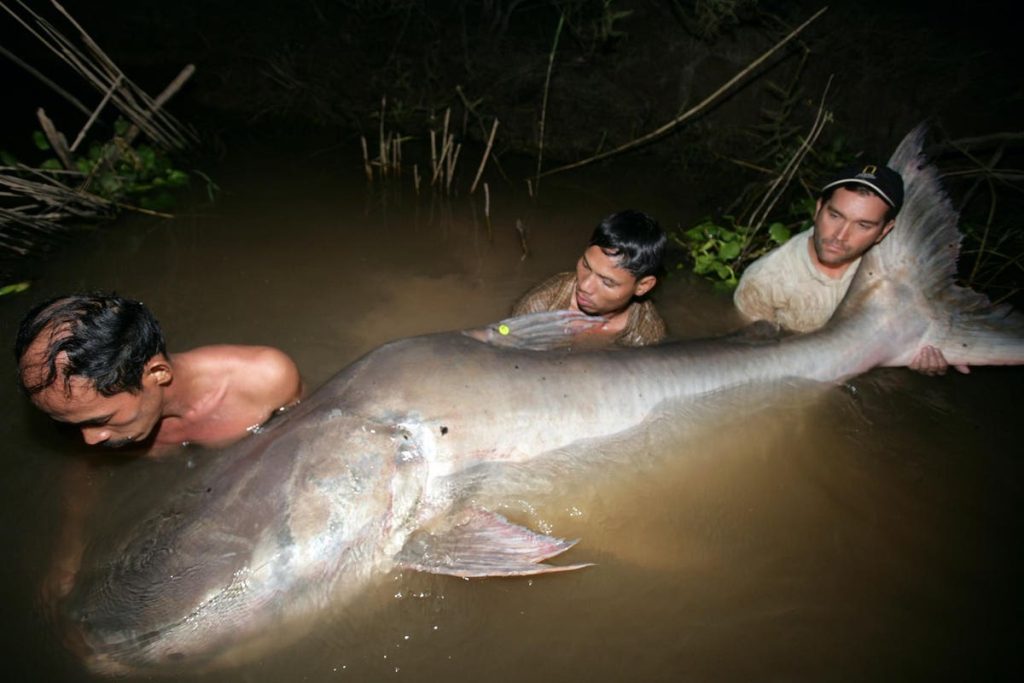This is the third in three-part series focused on deltas. The first post explored how deltas form and how they are crucial for food production. The second post examined the threats to deltas and why many deltas around the world are sinking and shrinking.
This post focuses on the Mekong Delta in Vietnam, which is simultaneously one of the strongest examples of deltas as organic machines of food production – and also one of the most urgent examples of delta decline and the need for management solutions.
The Mekong Delta is an economic powerhouse, home to a population of 20 million people who generate approximately a quarter of Vietnam’s gross domestic product (GDP). It is also a food production powerhouse: delta agriculture produces more than half of Vietnam’s staple crops and nearly 90% of its rice exports — significant for global food security given the country is the third largest exporter of rice in the world and exports from the delta represent up to 10% of rice traded globally.
Further, the delta supports a significant production from both capture fisheries and aquaculture. The delta’s fish farms produced a record level of 1.5 million tons of Tra catfish (Pangasius hypothalmus) in 2022. The Mekong and its delta also offer the second highest diversity of fish species of any river basin in the world – second only to the Amazon, which has a basin nearly nine times larger—and the largest freshwater fishery in the world. Beyond economic value—and those fisheries are worth billions per year—the Mekong system is also home to some of the largest and most amazing fish species on Earth, including the Mekong giant catfish, which can weigh as much as a grizzly bear (see top photo).
As described in the second post, deltas need a steady replenishment of sediment, such as sand, to raise them and maintain their position in their ongoing battle with the ocean, which is always striving to tear them down.
The Mekong Delta has seen a dramatic loss of the sediment it needs to stay competitive in that contest.
Prior to large-scale changes from how people manage the river, the Mekong River delivered to its delta between 140 and 160 million metric tons of sediment each year. Approximately 70% of that volume is now trapped in the reservoirs behind dams.
For the delta, that’s a loss of income. But as WWF’s Marc Goichot points out, income loss is not the only sediment challenge for the delta. Sand mining is rapidly depleting its savings account too. More than 50 million metric tons of sand are extracted each year from the delta in Vietnam and from river channels upstream of the delta in Cambodia.
The sand is used to make cement and other materials for construction in the region’s rapidly growing cities, but the unsustainable levels of extraction are driving deconstruction of the Mekong Delta.
Scientists forecast that with current trajectories, more than 90% of the delta could be underwater by 2100. After reading that sentence, revisit the paragraph above about the delta’s 20 million people, ¼ of Vietnam’s GDP and 10% of the world’s traded rice.
But is all lost?
Last year, I was part of a group of researchers that published a paper in Science with a very direct title: “Save the Mekong Delta from Drowning.” We offered six recommendations for shifting management of the river and delta toward a sustainable future. These recommendations are broadly applicable to river basins and deltas around the world:
· Avoid high-impact dams. Proposed hydropower dams on the Mekong would result in a further loss of sediment supply in the river, with nearly all sediment being trapped behind reservoirs. Modeling of power systems shows that, due to the renewable revolution (the dramatic drop in cost for wind, solar and batteries) the region can meet its needs for low-carbon electricity without building the dams that would trap this sediment.
· Pass sediment through or around dams. Some dams can be designed, or retrofitted, to pass sediment through them, with strategies such as flushing, sluicing, or sediment bypasses. The infrastructure for these strategies can be expensive to build and operate. As noted above, high-impact dams can generally be avoided. Existing dams can be evaluated for the ability to retrofit sediment passage.
· Pursue sustainable sand mining¸ including enforcement of existing regulations, planning to quantify a sustainable “sand budget” and promoting alternative materials (e.g., recycled materials) and sources (e.g., floodplains, not river channels) for sand.
· Transform agriculture in the Delta. Agricultural practices can be modified to reduce groundwater pumping. This can be accomplished in conjunction with a shift toward higher-value agriculture. For example, WWF and the Dutch Fund for Climate and Development (DFCD) are developing pilot programs for shifting management of delta farmland to avoid groundwater pumping, increase sedimentation from flood flows to build up delta surfaces, and produce more profitable types of rice and shrimp. This approach will not require funding, but in fact will be more profitable for landowners.
· Maintain connectivity of delta floodplains. It is not only necessary for sediment to reach the delta – it also has to be able to be deposited on delta surfaces, which means floodwaters (which carry the most sediment) need to spread out across the fields of the delta. If channels are bracketed by levees, then the sediment that remains in the river will tend to flush through the delta, rather than falling out in a new layer to help the delta grow. The cropping system described above is intended to promote those processes of spreading floodwaters and depositing sediment, but this will need to happen on a far larger scale.
· Leverage nature-based coastal protection. Mangroves and wetlands can reduce erosion while also benefitting fisheries and biodiversity—though, to be effective, these Nature-based Solutions require sufficient sediment.
Implementation of these strategies could mean that rather than 90% loss of the delta by 2100, only 10% would become submerged (some loss is inevitable due to sea level rise).
These changes will not be easy, but with so much at stake, decision makers and management agencies need to move quickly to reverse the deltas’s decline. In financial terms, they need to halt the rapid depletion of sediment savings and maintain, or even boost, current levels of sediment income – and then make sure that income gets spread around a bit, some sediment stimulus across the delta.
Given the importance of deltas for people, biodiversity and food security, those responsible for river and delta management in other regions should take steps to avoid the conditions that have led to crisis in the Mekong.
Read the full article here









